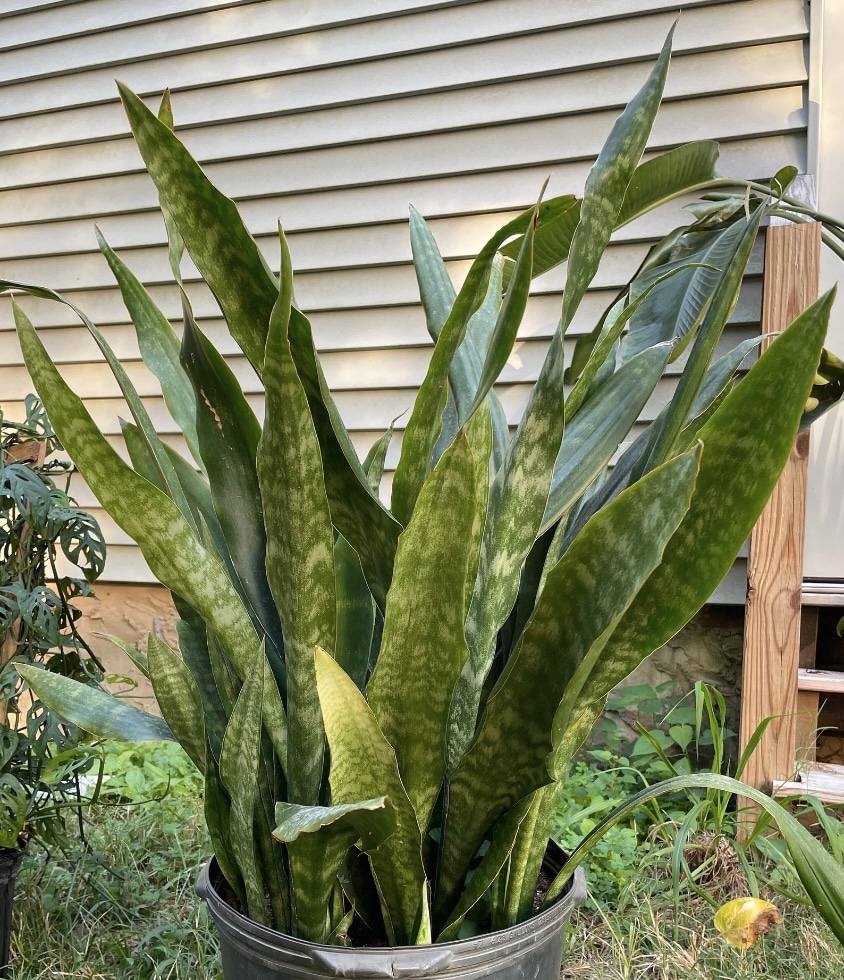| Question | Are Snake Plants Toxic to Dogs? |
|---|---|
| Answer | Yes, They Are Toxic |
| More Info | Snake plants (Sansevieria), also known as mother-in-law’s tongue, contain saponins, which are natural chemicals that can be toxic to dogs if ingested. Symptoms of poisoning can include nausea, vomiting, and diarrhea. While it is generally not life-threatening, ingestion can cause significant discomfort and health issues. It is recommended to keep snake plants out of reach of pets and contact a veterinarian if you suspect your dog has ingested any part of the plant. |
How Toxic are Snake Plants to Dogs
Snake plants, known scientifically as Sansevieria trifasciata, are popular for their resilience and air-purifying qualities. As a dog owner, it’s crucial to be aware of their potential toxicity to your furry friends.
- Toxin Involved: The primary toxic elements in snake plants are saponins, compounds designed to protect the plant from fungi and pests.
- Reactions in Dogs: When ingested, these saponins may cause:
- Nausea
- Vomiting
- Diarrhea
According to the ASPCA, snake plants are, indeed, toxic to dogs, earning a classification of “mild to moderate” in terms of their poisoning effect. The symptoms manifest because saponins can irritate a dog’s gastrointestinal system.
Specific symptoms your dog might experience after ingesting snake plant leaves include:
- Excessive drooling
- Pain in the abdomen
- Loss of appetite
- Depression of the central nervous system
Treatment: If you suspect your dog has nibbled on a snake plant, it’s advisable to monitor their symptoms and consult your veterinarian promptly. While fatalities are rare, the discomfort and gastrointestinal distress are not to be taken lightly.
Preventive Measures: The best approach is to keep snake plants out of reach to prevent any ingestion. This can be a challenge with curious pets, so evaluating the risk and potentially choosing pet-friendlier plants might be a safer option for a serene home atmosphere.
Symptoms of Snake Plant Poisoning in Dogs
If your dog ingests part of a snake plant, it’s crucial to recognize the symptoms promptly as they can cause discomfort and may require veterinary attention.
Gastrointestinal Symptoms
- Vomiting: Your dog might throw up to expel the plant material.
- Diarrhea: A common reaction to ingested toxins, loose stools may follow.
Oral Irritation Symptoms
- Excessive drooling: One of the first signs which suggests oral irritation.
- Difficulty swallowing: Irritation can lead to a sore throat and trouble swallowing.
Systemic Symptoms
- Lethargy: Indicative of your dog not feeling well and a result of overall malaise.
- Nausea: Your dog may exhibit signs like drooling or repeated swallowing.
First Aid (Call Your Vet)
If your dog has ingested part of a snake plant, prompt first aid is key to their recovery. Here is a concise guide to help you take immediate action:
- Identify the Plant: Confirm that the plant ingested is indeed a snake plant.
- Observe Symptoms: Watch for signs of mild toxicity such as drooling, nausea, or vomiting. More severe reactions could include diarrhea or dilated pupils.
Immediate Steps:
- Remove Plant Material: Gently remove any chunks of plant from your dog’s mouth if safely possible.
- Rinse Mouth: Cleanse your dog’s mouth with water to eliminate remaining plant particles and reduce absorption of toxins.
- Keep Your Dog Calm: Minimize your pet’s activity to slow the spread of the toxins through their body.
Contacting a Professional:
- Call Your Veterinarian: If you’ve noticed any signs of distress or uncertainty, contact your veterinarian immediately.
- Poison Control: Consider calling a pet poison helpline as they can offer advice specific to snake plant poisoning.
Vet Visit:
- Diagnosis: Your vet may conduct a physical exam and possibly some diagnostic tests.
- Treatment Options: Depending on the severity, your vet might induce vomiting, administer activated charcoal, provide IV fluids, or other supportive care for your dog.
Keep this Emergency Kit Handy:
- Emergency Contact Numbers: Vet clinic, 24-hour emergency hospital, and poison control center.
- First Aid Supplies: Including a clean cloth, bottled water, and a muzzle if necessary for safety.
Preventing Snake Plant Poisoning in Dogs
When it comes to ensuring the safety of your furry friends, preventing access to potentially harmful plants like snake plants should be a top priority. The snake plant, while a popular home décor choice, can pose a risk to dogs if ingested due to its toxic saponins content. Here are some professional tips to prevent snake plant poisoning in your dogs:
- Location: Keep snake plants out of reach. Ideally, place these plants on high shelves or in rooms that your dogs don’t have access to.
- Barriers: Consider physical barriers such as indoor dog gates or decorative fences to prevent your dogs from getting close to areas where snake plants are present.
- Training: Teach your dogs the ‘leave it’ command to discourage them from nibbling on any plants. This training can help in numerous contexts, not only with plants.
- Alternatives: Provide safe alternatives for your dogs to chew. Toys and dog-friendly chewing treats can keep them occupied and away from houseplants.
- Vigilance: Monitor your dogs when they are around flora. Dogs are curious by nature, and supervision is key to preventing mishaps.
- Education: Inform everyone in your household about the toxicity of snake plants to ensure they also act to keep your pets safe.
Frequently Asked Questions
When considering the safety of snake plants around dogs, it’s crucial to be aware of the risks and appropriate responses to potential poisoning incidents.
What symptoms may occur if a dog ingests a piece of a snake plant?
If your dog ingests part of a snake plant, they might exhibit symptoms such as:
- Nausea and vomiting
- Diarrhea
- Excessive drooling
- Loss of appetite
- Gastrointestinal irritation
How should one react if their dog shows signs of poisoning from a snake plant?
In the event of snake plant poisoning, you should:
- Remove any plant material from your dog’s mouth.
- Contact your veterinarian or an emergency vet clinic immediately.
- Follow the vet’s instructions, which may include bringing your dog in for treatment.
What plant species are considered highly dangerous to dogs when ingested?
Plants that are particularly toxic to dogs include:
- Sago Palm
- Rhododendron (Azalea)
- Lily of the Valley
- Oleander
- Autumn Crocus
Can the presence of snake plants in the home affect canines even if not consumed?
Simply having a snake plant in your home is unlikely to affect your dog unless ingested. However, it’s prudent to:
- Place the plant out of reach to prevent accidental ingestion.
- Monitor your dog to ensure they do not chew on the plant.
What immediate care strategies should be implemented for a dog that has eaten a snake plant?
For immediate care after ingestion of a snake plant:
- Don’t induce vomiting unless instructed by a professional.
- Offer water to help reduce irritation.
- Prepare to provide your vet with details of the incident.
What other common household plants pose a risk of toxicity to dogs?
Other common toxic household plants include:
- Dieffenbachia (Dumb Cane)
- Philodendron
- Peace Lily
- Pothos (Devil’s Ivy)
- Aloe Vera
Last update on 2024-05-03 / Affiliate links / Images from Amazon Product Advertising API





